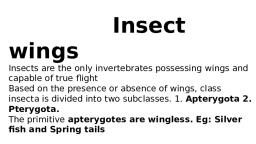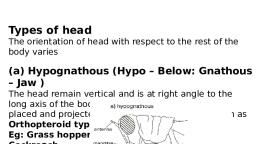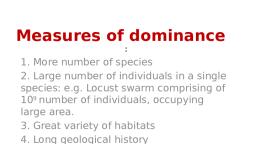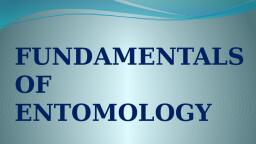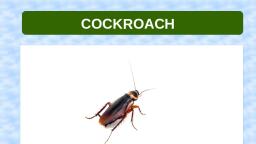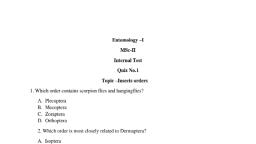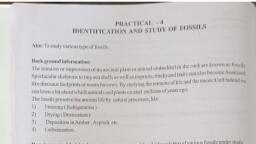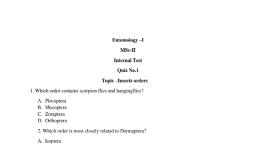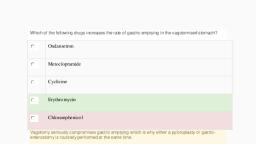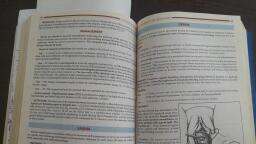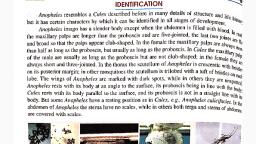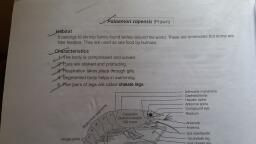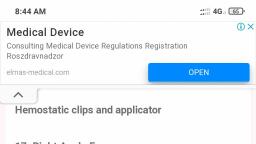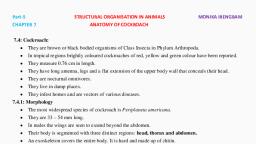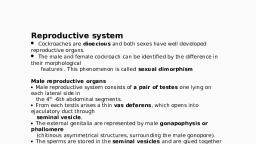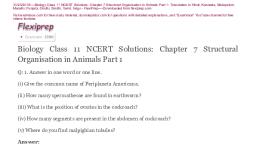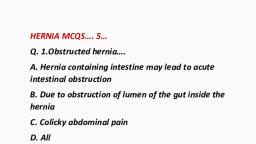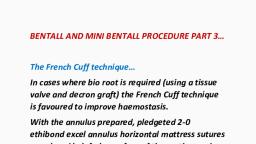Page 1 :
Organisation of Insect Body , , Grouping of body segments into distinct regions is known as tagmosis and the body regions are called as tagmata. , Each segments in insects is referred as somite or metameters.
Page 2 :
Sclerites of Head , 1. Labrum : It is small sclerite that forms the upper lip of the mouth cavity. It is freely attached or suspended from the lower margin of the clypeus, 2. Clypeus: It is situated above the labrum and is divided in to anterior, ante-clypeus and posterior post-clypeus., Head, First anterior tagma formed by the fusion of six segments namely , Preantennary, Antennary, Intercalary, Mandibular, Maxillary, Labial segments. , Head is attached or articulated to the thorax through neck or cervix. , Head capsule is sclerotized and the head capsule excluding appendages formed by the fusion of several sclerites is known as cranium.
Page 3 :
3. Frons : It is the facial part of the insect consisting of median ocellus., 4. Vertex : It is the top portion of the head behind the frons or the area between the two compound eyes., 5. Epicraniun : It is the upper part of the head extending from vertex to occipital suture., 6. Occiput : It is an inverted “U” shaped structure representing the area between the epicranium and post occiput, 7. Post occiput : It is the extreme posterior part of the insect head that remains before the neck region., 8. Gena : It is the area extending from below the compound eyes to just above the mandibles, 9. Occular sclerites : These are cuticular ring like structures present around each compound eye, 10. Antennal sclerites : These form the basis for the antennae and present around the scape which are well developed in Plecoptera (stone flies)
Page 4 :
Sutures of Head:, 1) Clypeolabral suture : It is the suture present between clypeus and labrum. It remains in the lower margin of the clypeus from which the labrum hangs down., 2) Clypeofrontal suture or epistomal suture: The suture present between clypeus and frons, 3) Epicranial suture: It is an inverted ‘Y’ shaped suture distributed above the facial region extending up to the epicranial part of the head. It consists of two arms called frontal suture occupying the frons and stem called as coronal suture. , This epicranial suture is also known as line of weakness or ecdysial suture because the exuvial membrane splits along this suture during the process of ecdysis., 4) Occipital suture: It is ‘U’ shaped or horseshoe shaped suture between epicranium and occiput.
Page 5 :
5) Post occipital suture: It is the only real suture in insect head. Posterior end ofthe head is marked by the post occipital suture to which the sclerites are attached. As this suture separates the head from the neck, hence named as real suture., 6) Genal suture: It is the sutures present on the lateral side of the head i.e. gena., 7) Occular suture: It is circular suture present around each compound eye., 8) Antennal suture: It is a marginal depressed ring around the antennal socket.
Page 8 :
Functions of Head , i. Food ingestion , ii. Sensory perception , iii. Coordination of bodily activities , iv. Protection of the coordinating centers
Page 11 :
Abdomen: , Third and posterior tagma of insect body. This tagma is made up of 9-11 uromeres (segments) and is highly flexible. Abdominal segments are telescopic in nature and are interconnected by a membrane called conjunctiva. , Each abdominal segment is made up of only two sclerites namely dorsal body plate (tergum) , ventral body plate (sternum)., In grass hopper eight pairs of spiracles are present in the first eight segments, in addition to a pair of tympanum in the first segment., Eight and ninth abdominal segments bears the female genital structure and ninth segment bears male genital structure. , Abdominal appendages in adult insects are genital organs and cerci. , Function: Concerned with reproduction and metabolism.
Page 12 :
Pre genital appendages are absent in pterygotes and present in Apterygotes. The abdomen in the embryo usually consists 12 segments, later the last segments degenerate .Last segment is known as telson or tail as in case of Protura., , Abdominal Segments from 1 to 7 are pregenital segments, , eighth and ninth are known as genital segments as they form genital appendages i.e. ovipositor in females and aedeagus or penis in males ., Tenth and eleventh segments are known as postgenital segments., The 10th segment in general forms the supra anal plate and 11th segment is represented by a pair of anal cerci (usually known as post- genital abdominal appendages).
Page 13 :
Pre-genital segments are represented by, , collophore, furcula and tenaculum in Collembola,, styli in Thysanura, cornicles (on dorsal side of 5th and 6th abdominal segments.) , , The abdominal segments consists of tracheal gills In immature forms of trichopterans, mayflies, mosquitoes etc., The last abdominal segments telescope in to each other to form a, pseudo ovipositor in diptera,., , The 1st abdominal segment get fused to metathorax forming propodeum whereas 2nd abdominal segment forms a narrow pedicel or petiole followed by enlarged gaster (rest of the abdominal segments) in hymenoptera.
Page 15 :
Antenna consists of 3 parts, 1) Scape : It is the first segment of antenna. It is conspicuously larger than succeeding segments, 2) Pedicel : It is the 2nd or middle segment of antenna that forms a joint between scape and flagellum. It consists of the special auditory organ known as “Jhonston’s organ”. which is used as a chordatonal organ in some of the insects like mosquitoes. , 3) Flagellum : It is the last antennal segment which consists of many segments that varies in shape and size. Flagellum may very in size and form.
Page 16 :
Antennae are also called feelers., They are paired, highly mobile and segmented., Antennae are located between or behind the compound eyes. All insects except protura have a pair of antennae., Antennae are well developed in adults and poorly developed in immature stages. , The antenna is set in a socket of the cranium called antennal socket. , The base of the antenna is connected to the edge of the socket by an articulatory membrane. This permits free movement of antennae. Both scape and pedicel are provided with intrinsic muscles. The remaining annuli or flagellomeres are known as flagellum or clavola which lack individual muscle. Surface of the flagellum is supplied with many sensory receptors that are innervated by the duetocerebrum of brain. , , In collembola and Diplura, the flagellar segments are muscular in nature and as true segments and the antennae is known as segmented type. , Jhonston’s organ is absent in Collembola & Diplura.
Page 17 :
Functions of antenna:, 1. Mainly serve as the sense organ responding to touch, smell, odour, humidity, temperature as well as air currents or wind speed., 2. Jhonston’s organ on pedicel functions as an auditory organ responding to sound and also helpful for measuring the speed of air currents., 3. Help the mandibles for holding prey and for mastication of food material, 4. Helps in sexual dimorphism, 5. Useful for clasping the female during copulation, 6. Aid in respiration by forming an air funnel in aquatic insects.
